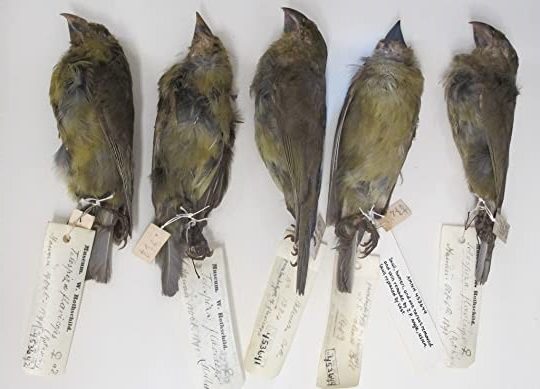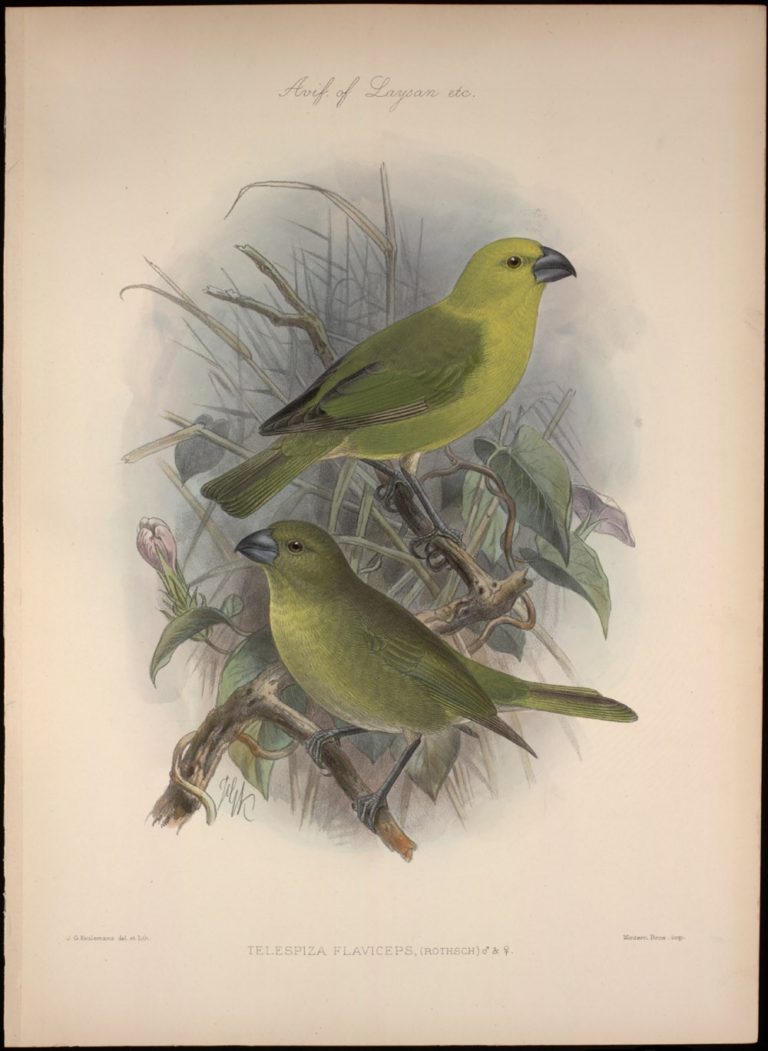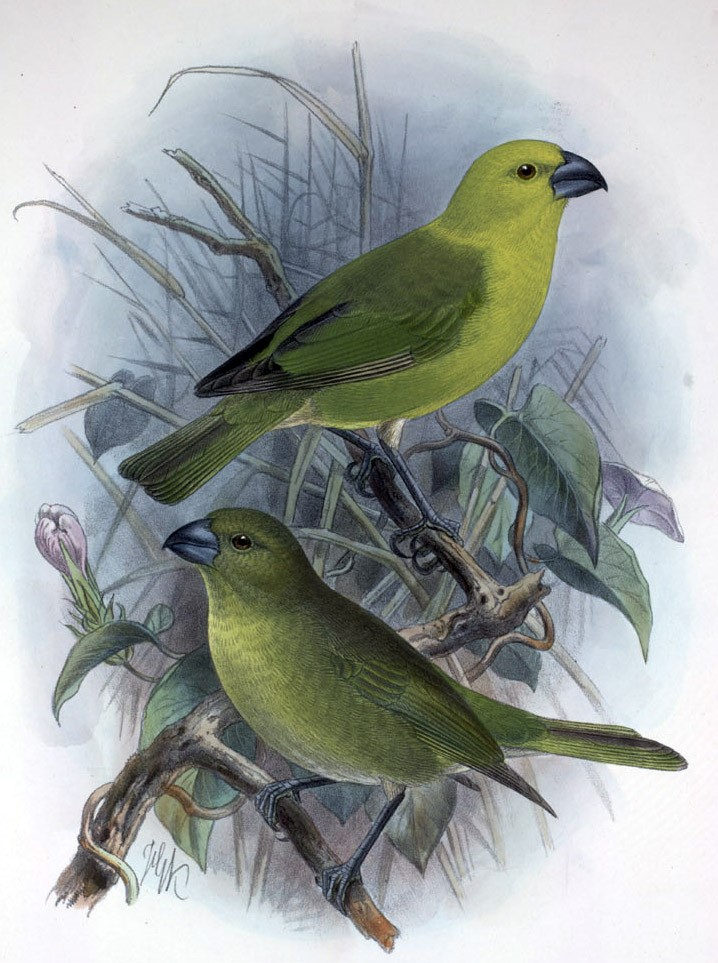Birdfinding.info ⇒ The Lesser Koa-Finch was found only on one occasion, during a collecting expedition from September 30 to October 16, 1891, when eight specimens were collected at Pu’u Lehua Ranch on Hualalai. The collectors believed that they were females or immatures of a closely related species that was present in larger numbers, the Greater Koa-Finch, of which sixteen specimens were collected together with the Lessers during the same expedition.
Lesser Koa-Finch †
Rhodacanthis flaviceps
Extinct. Formerly endemic to the Big Island of Hawaii.
Known from koa forests between approximately 1,400 and 1,500 m elevation on the slopes of Pu’u Hualalai. As its name suggests, it was associated with the koa tree (Acacia koa) and is believed to have subsisted largely on the koa seed.
Identification
A medium-large olive grosbeak.
Male had dark-olive upperparts, a yellow head and breast, and yellowish-olive belly.
Females and immatures were dark-olive above, with paler yellowish and grayish tones in their underparts. They were easily confused with the Greater Koa-Finch—and were initially thought to belong to that species.

Lesser Koa-Finch, females. (Natural History Museum at Tring.) © Andrew Esposito

Lesser Koa-Finch, male and female. John Gerrard Keulemans, 1900
Notes
Monotypic species.
IUCN Red List Status: Extinct.
References
BirdLife International. 2016. Rhodacanthis flaviceps. The IUCN Red List of Threatened Species 2016: e.T22720745A94681389. https://dx.doi.org/10.2305/IUCN.UK.2016-3.RLTS.T22720745A94681389.en. (Accessed May 30, 2020.)
Hume, J.P. 2017. Extinct Birds (Second Edition). Bloomsbury Publishing PLC, London.
Pratt, H.D. 2005. The Hawaiian Honeycreepers: Drepanidinae. Oxford University Press.
Pyle, R.L., and P. Pyle. 2017. The Birds of the Hawaiian Islands: Occurrence, History, Distribution, and Status. Version 2 (January 1, 2017). http://hbs.bishopmuseum.org/birds/rlp-monograph/. B.P. Bishop Museum, Honolulu, Hawaii.
